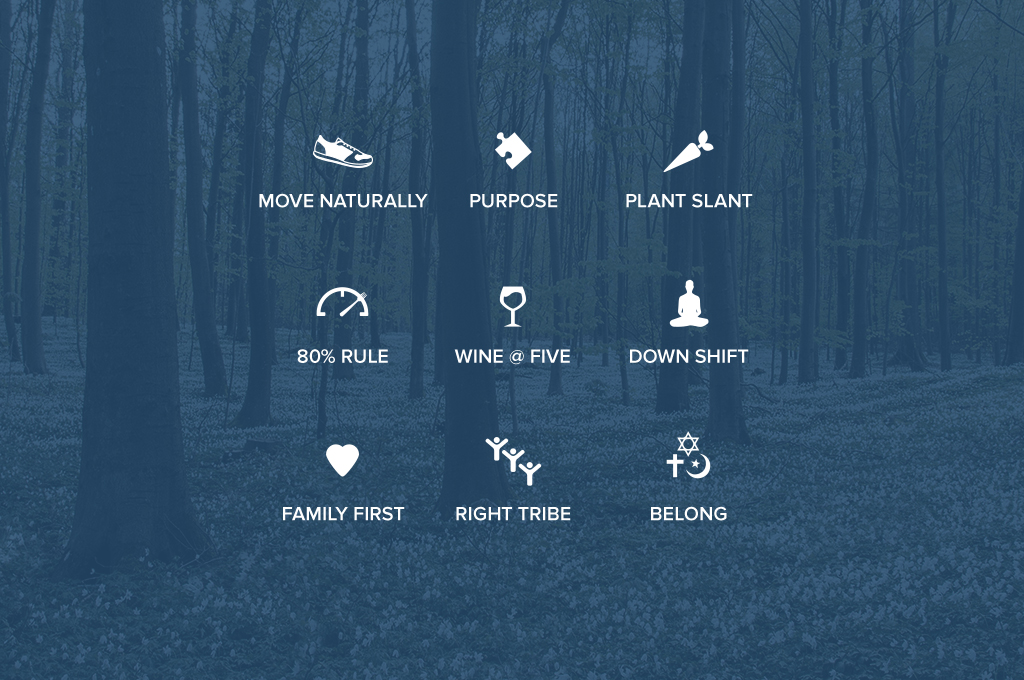Northwest Arkansas has become a magnet for transplants who are seeking a better quality of life. In fact, NWA is under consideration as a Blue Zone area.
What is a Blue Zone Area?
Blue Zones are regions of the world where Dan Buettner, National Geographic fellow, claims people live longer and have a better quality of life than average. The term first appeared on the November 2005 National Geographic magazine cover, with the headline, “The Secrets of a Long Life” by Buettner. He initially identified five areas of the world to be “Blue Zones”:
- Okinawa (Japan)
- Sardinia (Italy)
- Nicoya (Costa Rica)
- Icaria (Greece)
- Loma Linda, California (USA)
The term “Blue Zones”, trademarked by Dan Buettner, grew from academic and demographic work from Gianni Pes and Michel Poulain. Initially summarized in the Journal of Experimental Gerontology, the two men went to identify regions of the world with the highest concentration of male centenarians (people living over the age of 100) and as they located a cluster of villages with the highest longevity, they would draw blue circles on their map, and that’s when they began referring to the areas inside those circles as the Blue Zone.
The term was later broadened, relating it to areas of Okinawa, Japan and amongst the Seventh-day Adventists in Loma Linda, California. Buettner and Poulain, under the support of National Geographic, also authenticated longevity hotspots in Nicoya, Costa Rica and Icaria, Greece.*
What does this mean for NWA?
Fast-forward to February 12, 2019, where Tony Buettner, a co-founder and national spokesman for the Minnesota-based Blue Zones Project, traveled to NWA with his team, to gauge the interest from the community to see if the region is ready for a Blue Zone conversion. Buettner spoke to a room full of engaged business owners and community members to discuss how community policy impacts physical activity, as well as access to healthier foods, and mentioning smoking habits amongst the Northwest Arkansas community.
According to TalkBusiness.net, Buettner told the crowd in attendance (held in Rogers, AR) that the Blue Zones Project is studying NWA to look for similarities with the areas previously mentioned. They are looking for parallels in diets, mobility, and lifestyles. Researchers found Blue Zone Areas are more alike than different. These regions all had approximately four times the number of centenarians than non-blue zone areas, and that none of the people in these geographic areas try to set out with a mission to reach 100 years old.
“Longevity isn’t pursued; it’s ensued,” Buettner told the audience. (talkbusiness.net)
How does BFF Play a Role with Blue Zone Areas?
Bentonville Film Festival has all of the amenities that most film festivals offer, such as a variety of events, panels on topics in the film industry, up-and-comer filmmakers and other creatives, as well as Hollywood celebrities. However, what makes BFF stand-out is its overarching mission of inclusivity, and we believe offering a diverse and inclusive experience for the people of Northwest Arkansas and the surrounding region– as well as any nation or worldwide visitors– brings not just a sense of passion of film to the area, but a purpose. Events like BFF bring energy and excitement into the region that other areas of the country might not offer.
Some Stories of People Living in Blue Zone Areas*
One 97-year-old man in the Loma Linda area, who happened to be a very wealthy individual, got an offer for a new privacy fence but the man decided he would build the fence himself. For four days, Buettner said they watched the man dig fence footings and put up the fence. However two days later, the man ended up in the operating room — not as a patient, but as a cardiac surgeon who still participates in 20 open-heart surgeries a month.
Buettner said it’s not rare to see an 103-year-old man chopping wood in Sardinia, Italy, where most men live an average of 10 years longer than that of the U.S. Buettner added that the secret to this; the practice of meditation and de-stressing, which is done each day with a cup of tea, all while reflecting on lost loved ones. He said the Japanese also have very strong social circles throughout their life, another component proven to add many years to a person’s life.
The team at the Blue Zone Project developed nine key elements* which can be replicated in other communities around the world to attain healthier populations who live longer.
1.) Move Naturally
- Find ways to be more physically active. The original Blue Zones have people moving every 20 minutes. Walking, biking, standing and not sitting
2.) Purpose
- Waking up with a purpose each day can add up to seven years to a lifespan.
3.) Down Shift
- Find time to unwind each day. Meditate, yoga, hike… whatever works for you and your taste.
4.) Plant Slant
- Put more fruits and vegetables on your plate.
5.) Wine @ 5
- For those that have a healthy relationship with alcohol, enjoying a glass of wine with good friends each day.
6.) Family First
- Invest time in family, which can add up to six years to an average life.
7.) Belong
- Belong to a faith-based community and attend services regularly can add up to 14 years to your life.
8.) Right Tribe
- Surround yourself with people who support positive behaviors — and who support you!
9.) 80% Rule
- This means 80% of the effects of your life come from 20% of the causes you put into it. Live wisely.
For more information regarding the Blue Zone Project, visit their website HERE!
*Information sourced by talkbusiness.net and bluezoneproject.com
